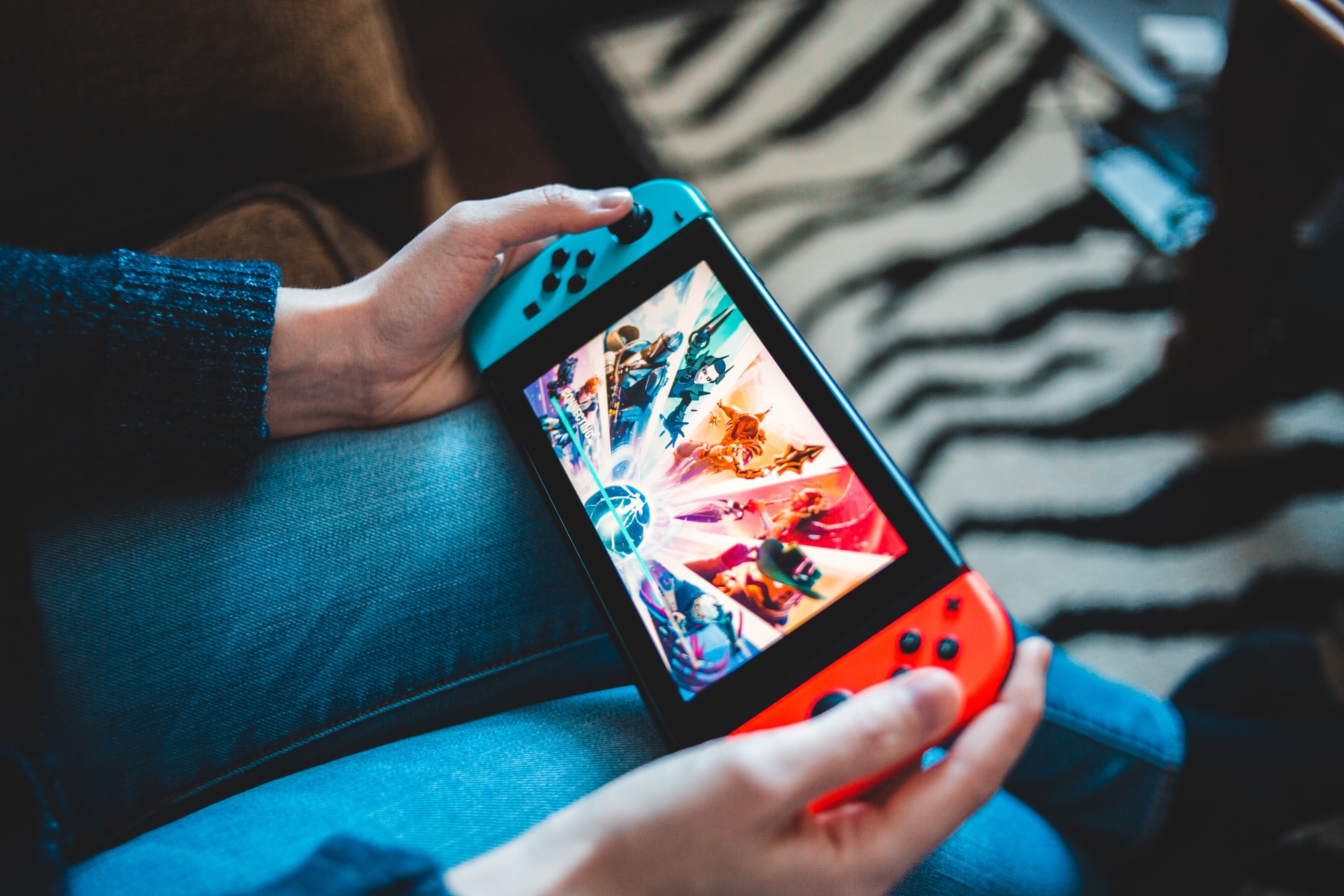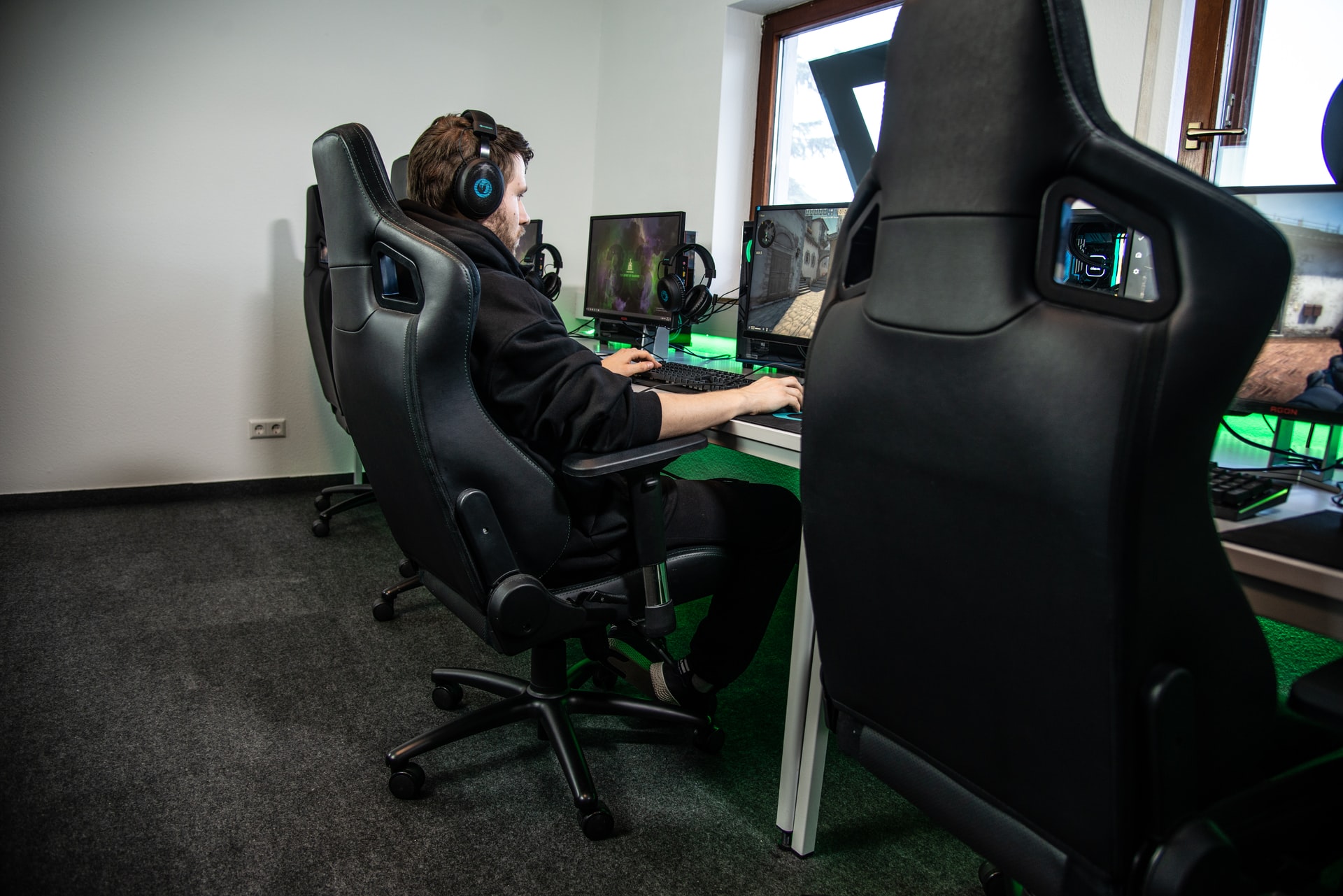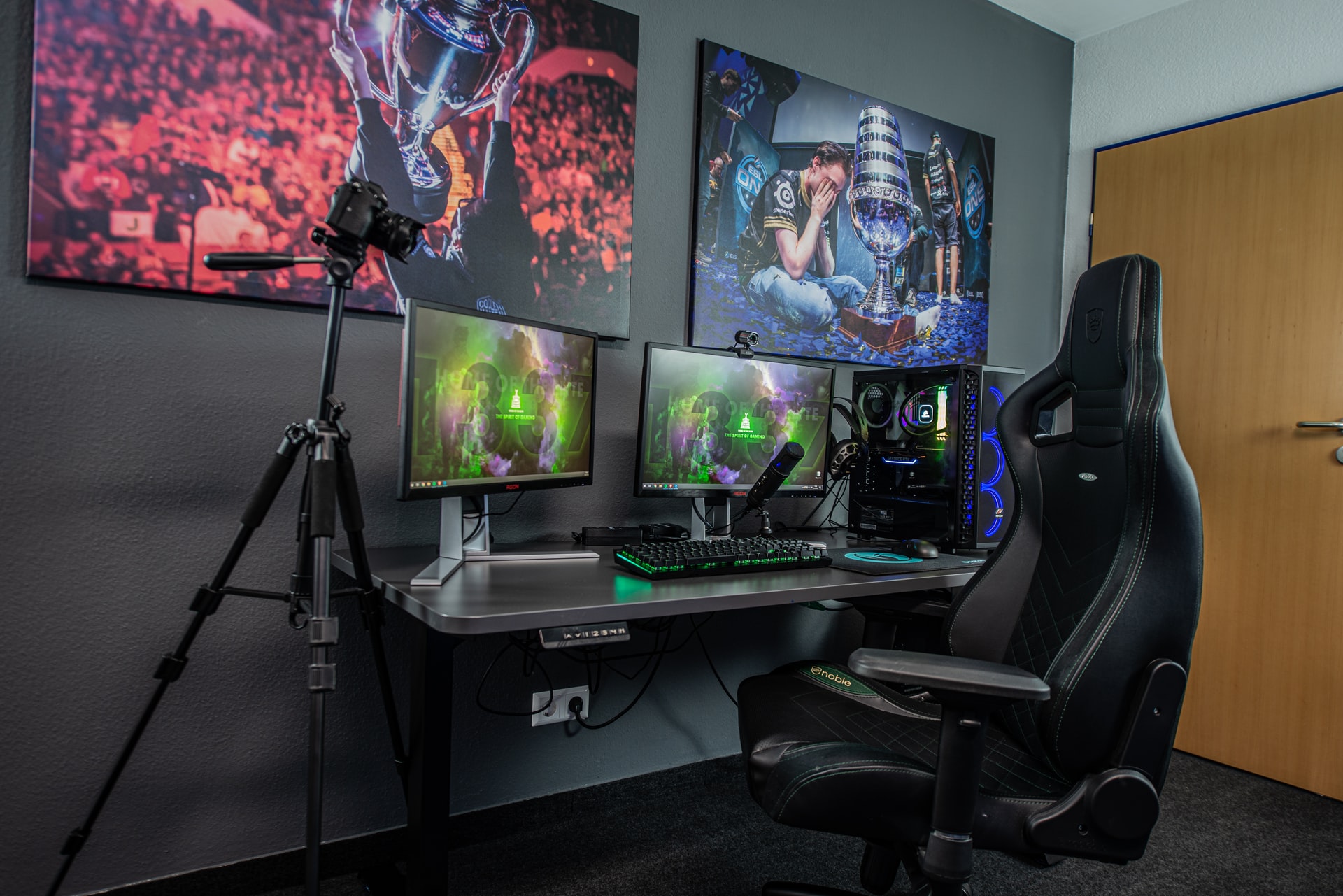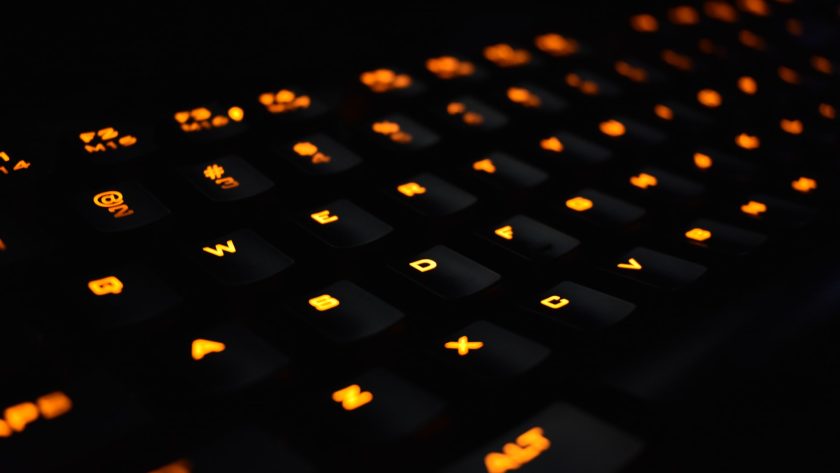It was a beautiful Bay Area Sunday afternoon, and I was pulled outside to Burgess Park because of the pleasant weather. It was clear what to do in the presence of basketball courts, soccer fields, a swimming pool, and a skate park: I needed to concentrate closely at my phone. I wasn’t the only one, either. The park was abnormally packed due to hundreds of others doing the same way as me and oblivious to the real world around them in favor of a more captivating virtual environment on their phones. the Pokemon Go universe.
Community Day, which took place this past Sunday, October 21st, was a unique occasion for Pokemon Go players that attracted millions of people to parks, shopping centers, public squares, and other gathering spots all around the world. People of diverse ages, races, and socioeconomic statuses but all displaying the same telltale sign: holding a phone in one hand while spinning and flipping it in the other while moving around in the real world to capture things that only exist online. And not just on October 21st did crowds for Pokemon Go gather. Every single month, Community Days are organized; Sunday’s was covered by hundreds of media sites, from Newsweek to Forbes and beyond. Each one is eagerly awaited with the pomp of a significant global event.
However, isn’t Pokemon Go old news now? Although it may have been popular at one point, nobody really plays Pokemon Go now, right?
It appears that Pokemon Go is not only doing well, but possibly doing even better.
Pikachu? Consider Pika-cha-ching.
“It was entirely unknown land. the early enthusiasm, that widespread excitement about the game, and the speed at which it became viral and traveled over the world. We were all experiencing something new.
Niantic’s popular mobile game Pokemon Go was first released on July 5, 2016, more than two years ago. It immediately rose to the top spot among all mobile apps on both iOS and Android, and it held the record for the most App Store downloads in a single week. With more than 20 million daily active users within its first two weeks, Pokemon Go would also claim the title of biggest smartphone game ever in the US.
 Additionally, in those first two weeks, in-app purchases for Pokemon Go averaged a startling $2 million per day, and the game produced financial gains much in excess of that amount. Pokemon developer Nintendo saw its shares rise by 25% shortly after the game’s release and then more than double within two weeks, boosting its market cap by $20 billion. And that was just for being linked to Pokemon Go; Nintendo had very little to do with it.
Additionally, in those first two weeks, in-app purchases for Pokemon Go averaged a startling $2 million per day, and the game produced financial gains much in excess of that amount. Pokemon developer Nintendo saw its shares rise by 25% shortly after the game’s release and then more than double within two weeks, boosting its market cap by $20 billion. And that was just for being linked to Pokemon Go; Nintendo had very little to do with it.
Like previous popular trends, Pokemon Go’s appeal did eventually fade. Initially reaching hundreds of millions of monthly players, the user base steadily decreased until it reached 65 million members by April 2017. But at that point, Pokemon Go also started to distinguish itself from other passing trends. These 65 million players persisted, continuing to invest a considerable amount of time and money in the game, helping Pokemon Go reach $1 billion in sales in a record amount of time.
Then something even stranger transpired: Pokemon Go’s resurgence in popularity.
Niantic staged its first-ever organized event in Chicago (named Go Fest) for its one-year anniversary in July 2017; the 20,000 tickets that were made available were quickly sold out (and subsequently crashed cellular service in the area during the event due to the high demand). More than 800 million downloads of the game were made by 2018. Additionally, May 2018 had more users (147 million) than any other month since the game’s release. Additionally, that month’s income of $104 million increased by 174% from the previous year. This translates to daily revenue of $3.3 million, which is more than the daily average from Pokemon Go’s explosive initial week.
Additionally, Pokemon Go just celebrated another significant financial achievement: it crossed the $2 billion lifetime revenue mark in just 811 days, making it the third-fastest game to ever achieve that goal.
The popularity of Pokemon Go has been nothing short of amazing. It is really impressive for a service to have such a historic opening act and then go on to not just meet up to but even exceed expectations from that premiere in its subsequent acts. Even more so when you take into account a little-known aspect of Pokemon Go: the game is genuinely monotonous.
What is Pokemon Go, exactly?
Video games are primarily intended to be fun for all players.
The three primary objectives in Pokemon Go are as follows:
You can only find Pokemon by strolling around with your phone and waiting for them to arrive at random. Pokemon are caught by making a quick, repetitive flick motion with your finger, followed by a brief wait to see if the Pokemon was caught. Both activities are completely probabilistic; the Niantic game code, not any human skill, determines whether you were successful at each activity based on a mathematical calculation. Pokemon battles are deterministic affairs where users must take a particular course of action to prevail. To perform that operation, which again doesn’t involve ability, is to quickly tap anyplace on the screen.
Finding Pokemon and catching Pokemon are the first two objectives, and they all depend on chance. The final job, fighting Pokemon, relies on haphazard, illogical tapping of your finger. The lack of user talent in any of those three duties makes the gaming monotonous. In other words, despite playing Pokemon Go for more than two years, I haven’t gotten any better at any aspect of the game since there isn’t anything there to get better at.
However, that does not imply that the game is monotonous. My own experience with the game has shown that it is anything but dull, as I have walked 1,318 kilometers to capture 23,586 Pokemon as of writing this. Which raises the question of how I can excuse dull gameplay with a fun game.
Pokemon Go isn’t truly a game, for that reason. It’s an antique.
 My two Pokemon Go accomplishments
My two Pokemon Go accomplishments
In essence, Pokemon Go is a digital scrapbook. Not at all connected to Angry Birds, Candy Crush, or Fortnite, but a sibling of baseball cards, stamps, or coins. When it comes to collectibles, the destination is more significant than the process. The gameplay for Pokemon Go or the act of gathering itself does not make for fun. Pokemon Go users are more interested in the gameplay’s outcome, which is owning the Pokemon character.
Because it doesn’t matter, the gameplay can be monotonous. Pokemon Go has nailed the satisfaction of having acquired the collectible, which is what important. They’ve successfully produced a set of baseball cards that can be carried around at all times, talks and moves, and changes forms. It also has no fakes or frauds. And because the entire collection only resides on Niantic’s servers, they have complete control over every piece of it. With a few lines of code, any single collectible (in their case, a Pokemon) may be instantly generated, removed, transferred, updated, audited, and repriced.
Although Pokemon Go may be a dull game, it also might be the greatest collectible ever made.
Lessons learned from Pokemon Go
Of all things, Pokemon Go started as an April Fool’s Day practical joke at Google, which is known for its extravagant April 1st antics. The concept of putting Pokemon figures inside Google Maps was created by Google Maps engineer Tatsuo Nomura in 2014. At the time, it was such a ridiculous idea that it was actually done as a joke. In a remarkable instance of life mirroring art two years later, Nomura would in fact serve as the product lead for the introduction of Pokemon Go. This information is untrue.
YouTube teaser for Google’s April Fools’ hoax involving Pokemon
Nomura provided an update on the product strategy in an interview with the Nikkei Asian Review around Pokemon Go’s one-year anniversary. But he also offered explanations for Pokemon Go’s extraordinary popularity in his quotes. And if you read carefully, you’ll notice that there were three crucial product choices that, in my opinion, were decisive.
“The [Pokemon] character is well-known around the world. There is no other content quite like this. The Pokemon brand has continued to grow.
With an astounding $85 billion in anticipated lifetime earnings, the Pokemon media brand has lately been acknowledged as the most grossing franchise of all time. That surpasses popular culture icons like Mickey Mouse, Harry Potter, and even Star Wars. That surpasses the combined budgets for James Bond, Looney Tunes, Peanuts, and Barbie.
Pokemon itself was already extremely well-liked with 260 million games sold, 21.5 billion trading cards supplied, 800 TV episodes, and 17 full-length feature films released. Pokemon Go is undoubtedly a contributing cause to that financial windfall. For many years, Pokemon dominated the media. Because of the power of the Pokemon brand, Pokemon Go’s starting point was already extremely high, even though it has helped the franchise as a whole reach new heights.
And Pokemon’s popularity isn’t the only factor that makes it such a strong base for development. It was certainly helpful for the Pokemon Go game to have an initial audience, but much more crucial was the fact that the media property gave its viewers a common culture, history, and set of values. You didn’t have to explain all the fundamental principles, such as what is good and what is evil, uncommon and common, and significant and ignorable. The Pokemon Go user base as a whole already knew which data, scores, and characters mattered because the media property had already created and explained the Pokemon universe. They not only knew, but they also cared.
That is the strength of a successful media franchise. The franchise’s followers have already been instructed on the rules and persuaded that they are important. So there is far less effort to be done for a product that expands on that franchise. You can start your user experience midway through as a product creator since all the exposition has already been taken care of.
Media franchises give viewers access to a preexisting history and mythology, which is a significant advantage that companies and services of all kinds can leverage to get a head start.
“Video games have typically been played in living rooms with participants seated on couches. However, we came up with the concept of encouraging gamers to spend some time outside.
Pokemon Go is an augmented reality (AR) mobile game, according to its Wikipedia entry. However, in practice, AR barely has any impact on Pokemon Go. In reality, because it makes gameplay sluggish and unpredictable, most gamers start by disabling the AR feature. Additionally, using any AR application while holding a phone in front of your face is still a very unnatural and uncomfortable experience.
Instead, Pokemon Go is a location-based service that was built on top of the GPS radio in smartphones. It is not only one of the most popular games ever (along with Uber, Lyft, and Waze).
The development of the Pokemon Go product has been significantly influenced by location. First, by using your body as the controller and the real environment as the game’s map, the gameplay was drastically reduced. Your real-world movements were immediately transformed by GPS into in-game movements, so you didn’t need to learn where to go or how to move.
Second, the game was naturally social because of its setting. Other games create specific features like in-game chat and on-screen user callouts to advertise to users that there are other people playing with you. Pokemon Go doesn’t require these workarounds because you can just glance up and see other players (as I did at Burgess Park), creating a community that is as authentic as the best video games without the need to add any tools to promote it.
Location is also an effective notification technique. Take into account this intriguing fact: According to studies, we are such creatures of habit that we only visit an average of 25 venues on a regular basis. As you play Pokemon Go, you start to connect real-world locations with those in the game since they are identical. And because you frequent the same 25 locations on a daily basis, those frequent trips serve as a quiet but persistent reminder of Pokemon Go. Other games rely on fake notifications to entice you back into their online world. Pokemon Go, on the other hand, makes advantage of landmarks in your regular, real-world routine to entice you back into their virtual world.
Pokemon Go cleverly made use of the GPS radio in each of our phones to streamline the user experience, boost social signals, and create ongoing reminders that are triggered by physical locations. Other apps will undoubtedly follow suit, as will we.
“We want to make a game that both ardent gamers and newcomers may enjoy.”
 Pokemon Go cheats, also known as “Spoofers,” use specialized software to simulate location and activity in the app so they may play anywhere in the world without ever leaving their houses. Niantic has long been engaged in an arms race against these players. On the plus side, Niantic frequently adds new anti-spoofing technologies to their game. On the other hand, spoofing is promoted and made possible by entire communities.
Pokemon Go cheats, also known as “Spoofers,” use specialized software to simulate location and activity in the app so they may play anywhere in the world without ever leaving their houses. Niantic has long been engaged in an arms race against these players. On the plus side, Niantic frequently adds new anti-spoofing technologies to their game. On the other hand, spoofing is promoted and made possible by entire communities.
I have to admit that I have occasionally faked as the conflict continues. [I’ve added what I did at the end of this post if you’re interested in how,] It was quite entertaining at first. I crossed popular locations like the Taj Mahal, the Imperial Palace in Tokyo, and the Sydney Opera House off my Pokemon Go bucket list. Rare Pokemon that were absent from my collection were caught. When and where I pleased, I played. And at that point, everything lost its amusement value.
As I’ve already said, there is no talent involved in the gameplay of Pokemon Go. But what it is full of are limitations: some Pokemon only emerge in specific places, and some tasks can only be completed at particular times. And that’s actually advantageous for the customer since excellent products excel despite, not in spite of, their limitations. Fast content consumption is made possible by the 280 character limit for Tweets, the 10 second time limit for Snaps, and the 24 hour time limit for Stories. All of these limitations are deliberate ones designed to enhance the experience on Twitter, Snapchat, and Instagram.
Similar to this, Pokemon Go’s app constraints have been added with a specific goal in mind: to slow down the game’s pace. Slower play makes collecting more difficult, which increases the collectible’s perceived value when acquired. When you have to put time and effort into your catch, you are more appreciative of it. However, I unintentionally decreased the value of the same thing I was collecting when I was able to instantly switch between locations and time zones through my spoofing. With the restrictions lifted, my entire experience with Pokemon Go was significantly worse.
Consider it to be the slow movement in video games. And that’s a component of Pokemon Go’s clever product design, which leveled the playing field for all players. There is no pressure to improve the game because it is designed to be most fun at a leisurely pace with deliberate friction in the process of collecting (either through practice or cheating). Everyone may take full advantage of the game by playing as though they are a beginner, which is truly how you can have the most fun.
Because of the way user funnels operate, every app will always have more beginners than specialists using its service. Additionally, you can increase the overall pleasure and delight of your audience if you can reduce the experiential gap between your novice and expert users.
All good things must come to an end, right?
In just a few short months, Niantic’s user base increased by an astounding 35% over the summer, and more than 400,000 people attended their in-person events (in Chicago, Dortmund, Germany and Yokosuka, Japan). Pokémon GO is actually more powerful than ever, but once again, how long can this success possibly last? It must be shortly the end of this hot run, right?
Currently, there are 809 different Pokemon characters, of which 493 are included in Pokemon Go. According to one metric, the app is still in the first 40% of its lifecycle. The Pokemon Company and Niantic, on the other hand, recently revealed a new Pokemon in the game, the first new character they’ve ever made for Pokemon Go. The Pokemon Go universe is not just infinite, but it can also be quickly expanded without requiring a new game concept. Niantic isn’t under the same pressure to roll out new levels and game types all the time like other developers are in order to keep gamers interested. Niantic just needs to do one thing to succeed as a collectible: never run out of things to collect.
Millions of ardent collectors will keep stepping into the Pokemon Go virtual world since there is an endless array of valuables to find. Why? You have to catch them all, after all.



